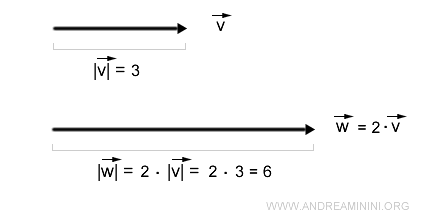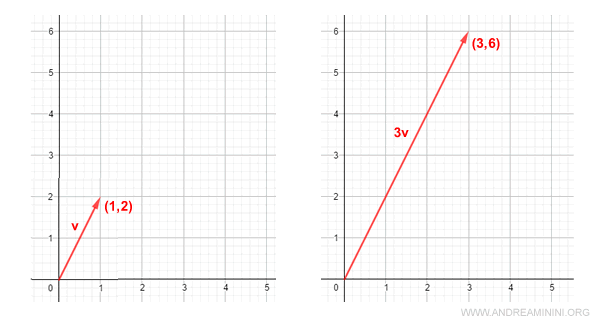Scalar Multiplication of a Vector
When I multiply a vector v by a scalar, denoted as k, I'm scaling each component of the vector by that scalar. This operation can be represented as:
$$ k \cdot \vec{v} = k \cdot \begin{pmatrix} v_1 \\ v_2 \\ \vdots \\ v_n \end{pmatrix} = \begin{pmatrix} k \cdot v_1 \\ k \cdot v_2 \\ \vdots \\ k \cdot v_n \end{pmatrix} $$
Here, a "scalar" refers to a single numerical value.
Multiplying a vector v by a scalar k results in a new vector w = k · v that:
- Points in the same direction as v when k is positive.
- Has a magnitude equal to |k| times the magnitude of v.
- Reverses direction if k is negative.
Note: If k = 0, the result is a null vector, effectively "zeroing out" v. When k = 1, the vector remains unchanged, and when k = -1, the vector flips to -v.
Practical Example
Consider a vector v in three-dimensional space (x, y, z):
$$ \vec{v} = \begin{pmatrix} x \\ y \\ z \end{pmatrix} = \begin{pmatrix} 3 \\ 1 \\ -2 \end{pmatrix} $$
Multiplying this vector by a scalar k = 2 yields:
$$ k \cdot \vec{v} = 2 \cdot \begin{pmatrix} 3 \\ 1 \\ -2 \end{pmatrix} $$
The resulting vector is:
$$ k \cdot \vec{v} = 2 \cdot \begin{pmatrix} 3 \\ 1 \\ -2 \end{pmatrix} = \begin{pmatrix} 6 \\ 2 \\ -4 \end{pmatrix} $$
Example 2
For a vector v with a magnitude |v| = 3 and a scalar k = 2:

The resulting vector w has the same direction as v but a magnitude of 6:
$$ \vec{w} = |k| \cdot \vec{v} $$
$$ | \vec{w} | = |k| \cdot | \vec{v} | = 2 \cdot 3 = 6 $$
This relationship is illustrated visually below.

Note: Multiplying a vector by a scalar k scales each of its components. For example, with k = 3 and v = (1,2)T:
$$ k \cdot \vec{v} = 3 \cdot \begin{pmatrix} 1 \\ 2 \end{pmatrix} = \begin{pmatrix} 3 \\ 6 \end{pmatrix} $$
This transformation can also be visualized.

Example 3
For a vector v with magnitude |v| = 3 and a negative scalar k = -2:

The resulting vector w points in the opposite direction to v and has a magnitude of 6:
$$ | \vec{w} | = |k| \cdot | \vec{v} | = |-2| \cdot 3 = 6 $$
This change in direction and magnitude can also be represented visually.

Note: When k = -1, the result is -v, a vector with the same magnitude as v but in the opposite direction.
